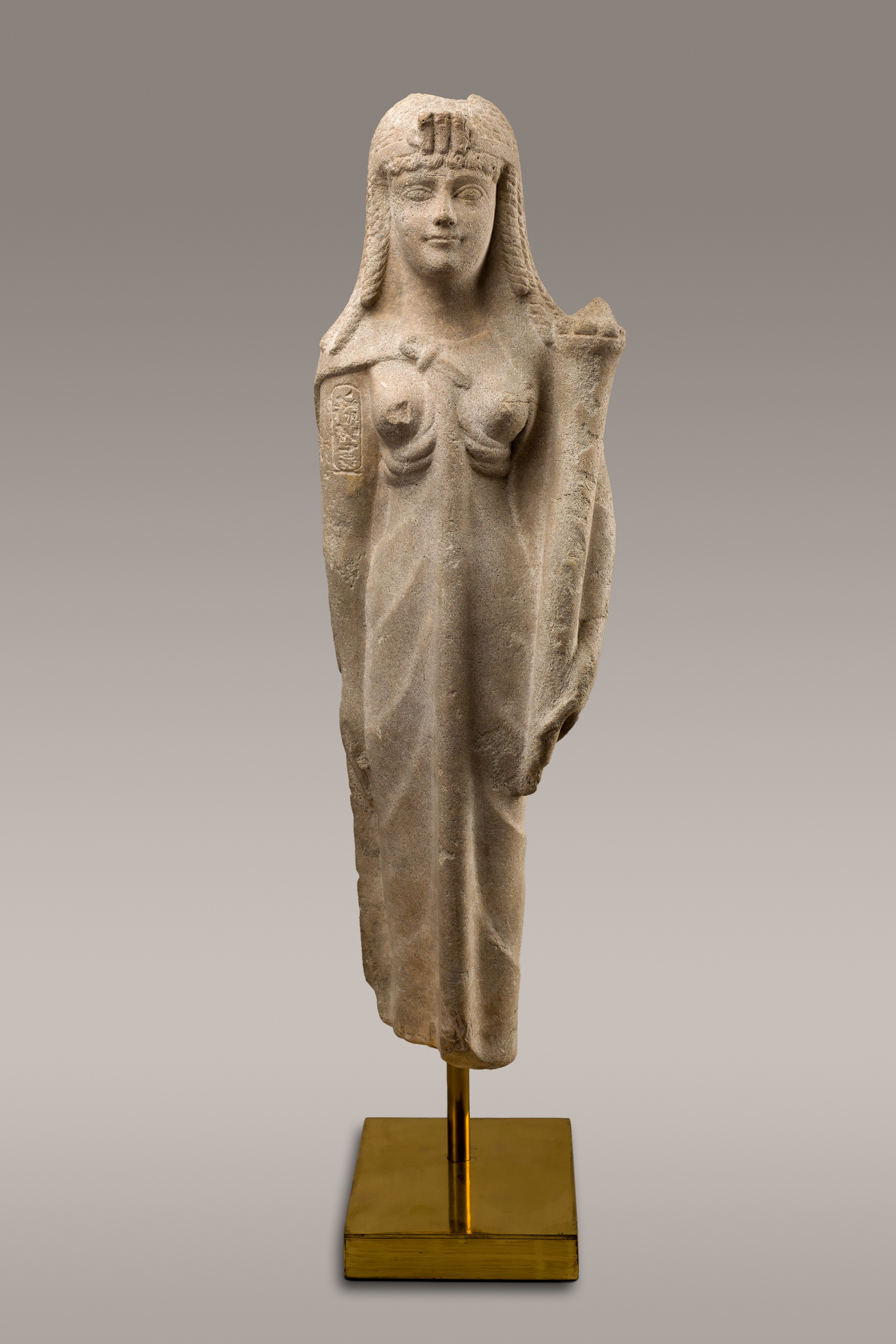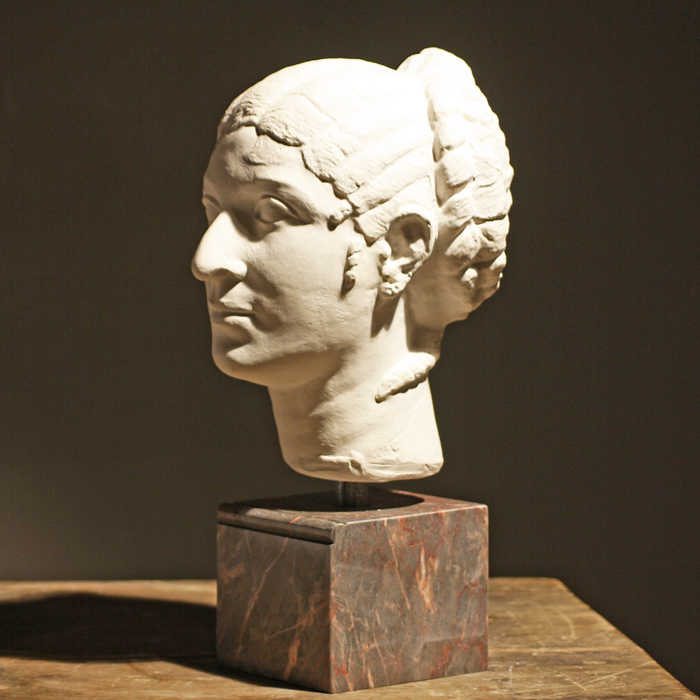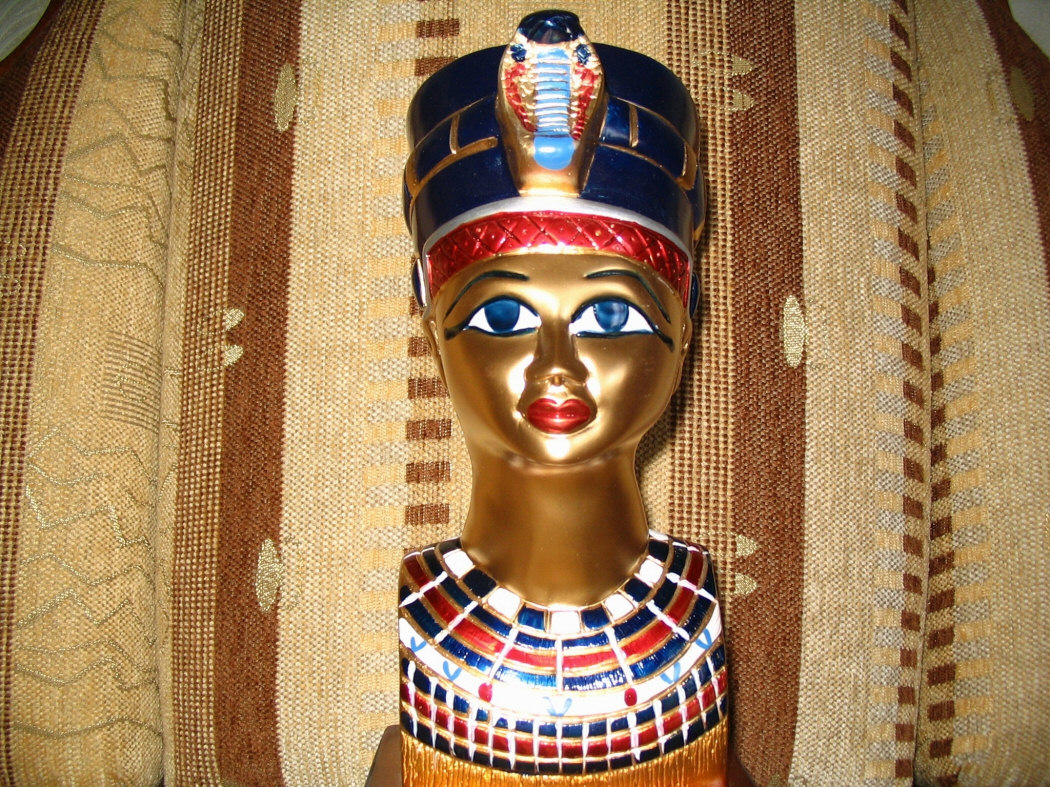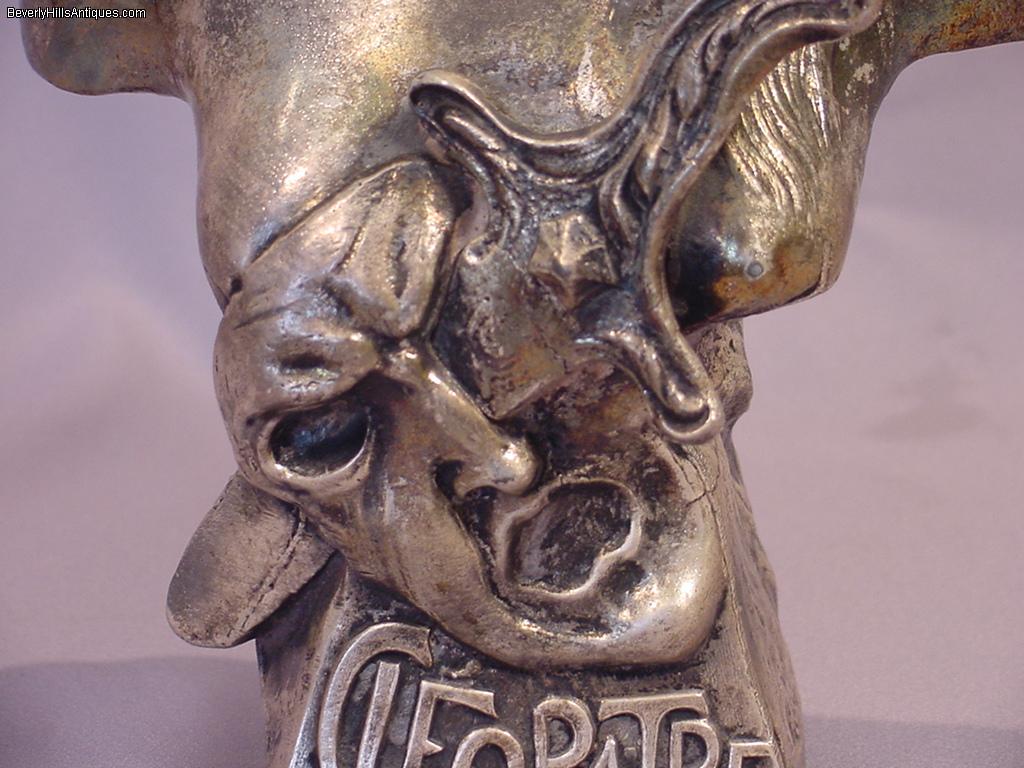
Marble Bust of Cleopatra DB.003 (LSO) Origin Egypt Circa 1 st
History tells us that Mark Antony and Cleopatra were buried together, meaning that the finder of her tomb will also discover Antony — an exciting proposition, indeed. Most archeologists assume that Cleopatra's grave is in ancient Alexandria. But this would mean that it's submerged underwater. A large portion of ancient Alexandria now lies.

Bust of Cleopatra Wikipedia
World History Encyclopedia, 26 Apr 2012. Web. 30 Nov 2023. Remove Ads Advertisement Marlbe bust of Cleopatra VI of Egypt form 30-40 BC. Altes Museum Berlin.
.jpg)
AN ITALIAN MARBLE BUST OF CLEOPATRA , CIRCA 1900 Christie's
Born in 70 or 69 B.C., Cleopatra was a daughter of Ptolemy XII (Auletes), a descendant of Ptolemy I Soter, one of Alexander The Great 's generals and the founder of the Ptolemaic line in Egypt.

Statue of a Ptolemaic Queen, perhaps Cleopatra VII Ptolemaic Period
"Famous in Her Father" In full: Cleopatra VII Thea Philopator ("Cleopatra the Father-Loving Goddess") Born: 70/69 bce Died: August 30 bce, Alexandria Notable Family Members: spouse Mark Antony son Ptolemy Philadelphus Role In: Battle of Actium On the Web: CNN - Who was the real Cleopatra? (Dec. 31, 2023) See all related content →

The myth of Cleopatra at Pinacotheque de Paris The Archaeology News
The Bust of Cleopatra VII is a granite bust currently on display in the Gallery of Ancient Egypt at the Royal Ontario Museum (ROM). It is believed to have been discovered in Alexandria, Egypt at the site of Cleopatra's sunken palace on the island of Antirhodos.
FileCleopatra VII statue fragment, 6930 BC Royal Ontario Museum
Facial reconstruction of the Ptolemaic Egyptian queen Cleopatra VII (r. 51-30 BCE). This artistic representation of Cleopatra is primarily based on a bust from the Berlin Altes Museum, widely agreed to depict Cleopatra. In addition to the Berlin portrait, the features in this reconstruction are based upon contemporary coin portraits and a bust from the British Museum which may depict Cleopatra.

Cleopatra VII Wikipedia
Boston, MA, United States This bust is identified as Cleopatra, ancient queen of Egypt, by her crown and by the small serpent that decorates the base. Once Cleopatra lost all hope of.

Bust of Cleopatra Museum of Fine Arts, Boston
The Bust of Cleopatra VII is a granite bust currently on display in the Gallery of Ancient Egypt at the Royal Ontario Museum . It is believed to have been discovered in Alexandria, Egypt at the site of Cleopatra's sunken palace on the island of Antirhodos.

Bust of Cleopatra Museum of Fine Arts, Boston
The bust reflects an ancient Roman prototype and was made by an artist whose nickname, Antico, resulted from his exceptional skill in such ancient techniques as bronze casting. The bust probably belonged to Isabella d'Este, Marchioness of Mantua. Description Patinated black surface (with bronze shining through), and traces of gilding.

Cleopatra JaymyKelsie
He says Cleopatra was also known to conceal a deadly poison in one of her hair combs, and the historian Strabo notes that she may have applied a fatal "ointment.". With this in mind, many.

15 Interesting Facts About Cleopatra
Bust of Cleopatra's husband, Roman General Mark Antony, at the National Archaeological Museum of Madrid. WH_Pics According to Plutarch, on the day that Augustus and his Roman forces invaded Egypt.
8170 / Cleopatra VII
Cleopatra VII Philopator ('father-loving') was born in January 69 BCE in the city of Alexandria, Egypt, the daughter of Ptolemy XII Auletes (117 BCE -51 BCE) and possibly Cleopatra V Tryphaena (c. 95 BCE - c. 57 BCE). Cleopatra was to become the last monarch of the Ptolemaic Empire (established in 323 BCE after the death of Alexander the.

543 portrait bust resembling Cleopatra VII on display in the British
A bust of Cleopatra. Cleopatra VII, also called Cleopatra Theo Philopater ("father-loving goddess"), was born around 70 B.C.E., the daughter of Egyptian pharaoh Ptolemy XII. She was part of the Ptolemaic line of rulers, descended from Ptolemy I, the Macedonian general who'd served under Alexander the Great and founded the dynasty about 304 B.C.E.

Antique Silvered Metal Bust Of Cleopatra Artist Signed For Sale
However, the lump of marble does not appear to have been a part of the diadem and it has recently been suggested that the full statue originally portrayed Cleopatra with her young son Caesarion, and that the piece was part of the infant's hand. The bust is a part of the Vatican's collection of Antiquities in the Gregorian Profane Museum. Remove Ads

Bust believed to be of Cleopatra VII, Altes Museum, Berlin Greek
Cleopatra's hair is styled similarly on another marble bust, this one found in a villa on the Appian Way in 1784 and now displayed at the Vatican's Gregoriano Profano Museum. On this bust too, her features are generally soft and her lips full. Her nose is missing, but its "footprint" on the face suggests that it was large.

Antique Silvered Metal Bust Of Cleopatra Artist Signed For Sale
Wikimedia Commons A possible bust of Cleopatra, which was made between 40 and 30 B.C. Cleopatra was born in Egypt around 70 B.C. But contrary to popular belief, the queen probably wasn't Egyptian herself. In fact, she belonged to a line of rulers that descended from Ptolemy I.